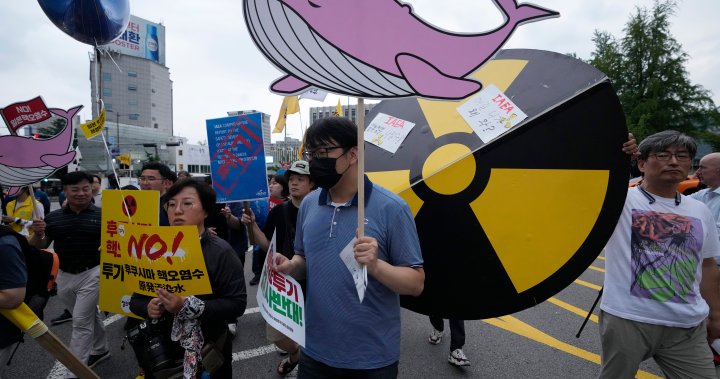
Japan plans to dump treated Fukushima wastewater in the ocean. Is it safe?
Global News
A proposal to dump water into the ocean from a nuclear power plant in Japan that over a decade ago experienced a meltdown has received some resistance.
A proposal to dump treated wastewater into the ocean from Fukushima nuclear power plant in Japan continues to face backlash, even as some caution there is no danger in doing so.
The Fukushima plant in northeastern Japan is moving forward with its plan to dump used water into the Pacific Ocean. The plant experienced a meltdown in March 2011 after a massive earthquake and following tsunami destroyed its cooling system, causing three reactors to melt down, releasing a large amount of radiation.
Water used to cool the reactor cores accumulated in about 1,000 tanks in the plant, and will reach their capacity by early 2024.
Japanese officials say the water needs to be released to prevent accidental leaks in case of another disaster and to continue with the plant’s decommissioning, and plan to release the water over decades through an undersea tunnel.
The water has been stored in tanks over the last decade as the plant devised exactly what to do with it, according to Jason Donev, an associate professor of physics at the University of Calgary who specializes in nuclear energy.
He said that a lot of the radioactivity of the water has been released by being stored in the tanks through decay, and in addition, the water will go through a filtration system called the Advanced Liquid Processing System, or ALPS.
“It is basically a really, really good filtration system,” Donev said. “That water is now safe. It’s fine.”
Donev said that water from nuclear plants is dumped into bodies of water all the time around the world, so the practice isn’t new.











